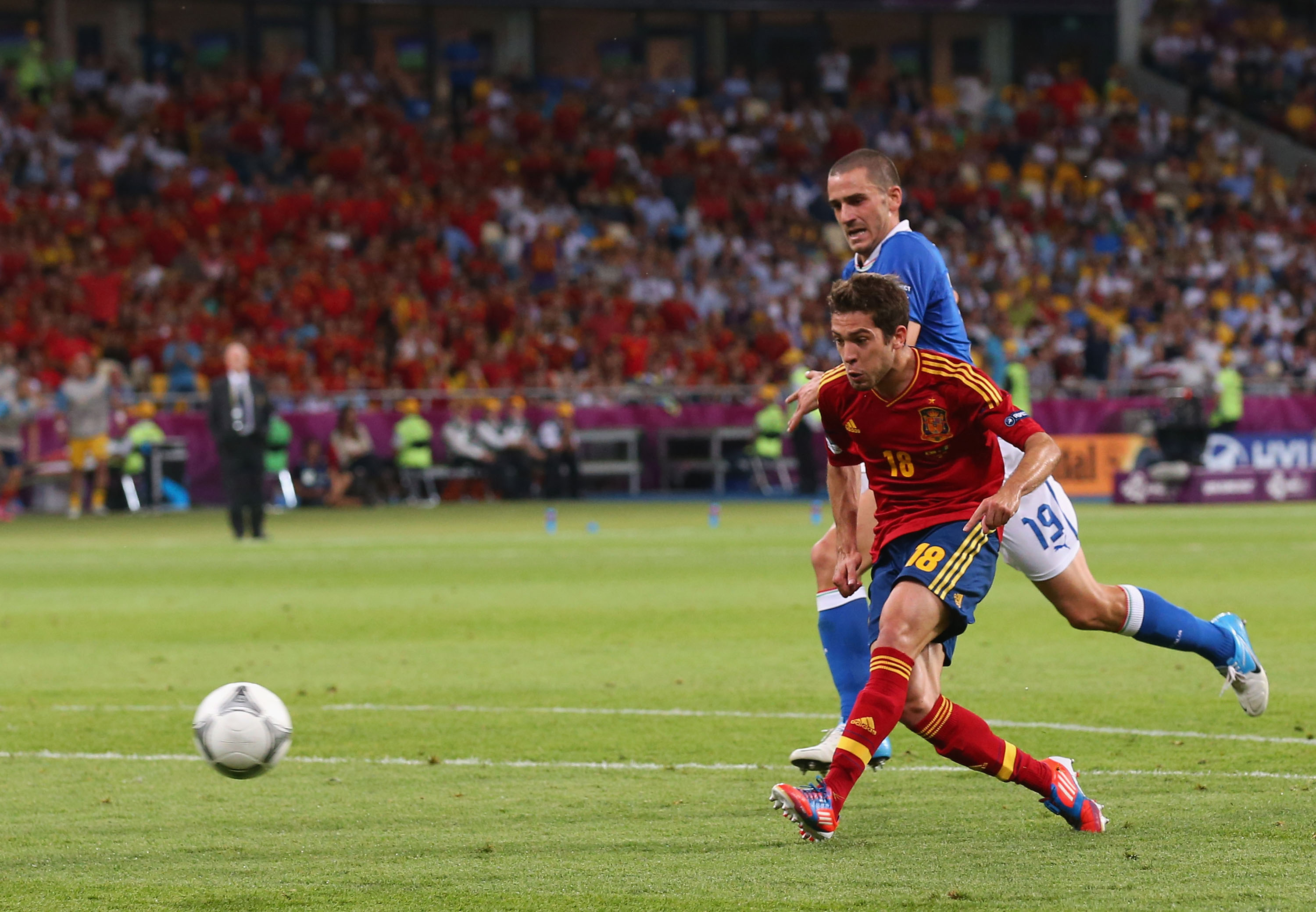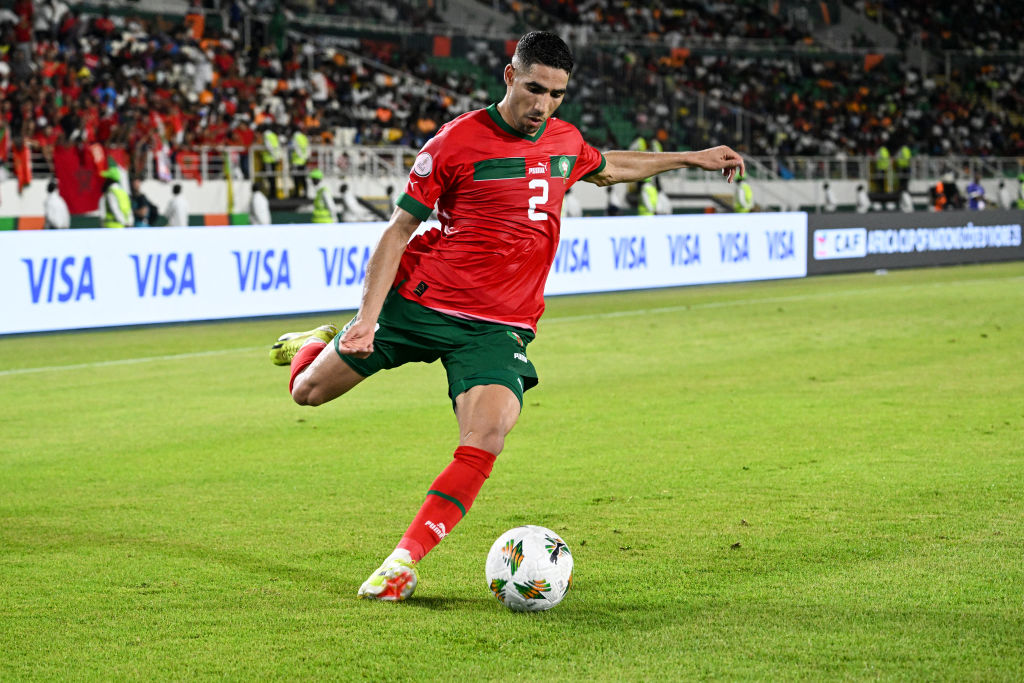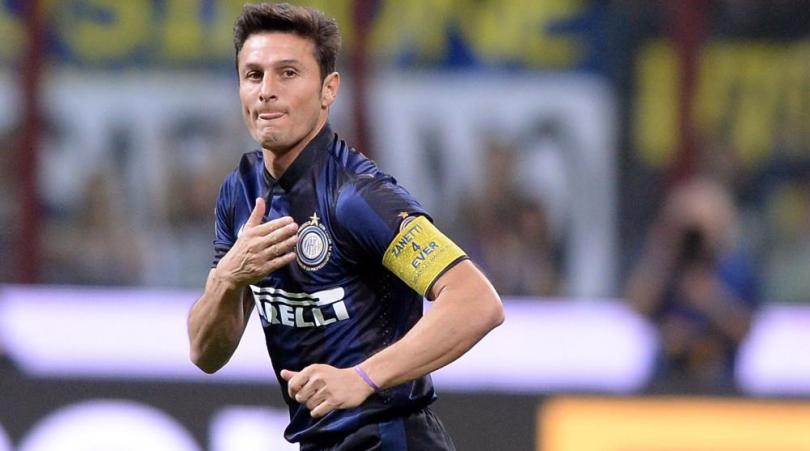The overlap: football tactics explained
An overlap has defined the career of many a full-back, but what is actually is it? Here's your tactical explainer
An overlap is one of the simplest, yet hardest to defend against attacking ploys, responsible for some of football’s greatest goals and biggest moments.
If you want to get to the magical land that is ‘in behind’ the opposition's defence, this is usually the quickest way. But what is an overlap and who uses them most effectively in today’s game?
Time for your lesson on another major football term, courtesy of the FourFourTwo experts. Let's begin…

I'm Jack, I've watched football through a tactical lens for over a decade, analysing trends not only at the top of the game, but also how strategies and approaches can be used at amateur level.
I’m also an FA-level 2 qualified coach and have written extensively on tactical analysis for various publications. A lot of my spare time is spent training, playing the game, or settling down to perfect a tactical approach on Football Manager.
What is an overlap?
An overlap is when a player runs on the outside a teammate in possession of the ball, going beyond the ball, ideally into open space.
It is a simple, yet effective, way to get in behind an opponent's defence. Tracking the player and the ball can be difficult, but defending against a well-timed overlap from a spare man is very hard.
In the clip above, the orange team's left-back makes an overlapping run to receive the pass and make the assist for the goal.
As the full-back has evolved over time to become – broadly speaking – a more attacking position, the use of overlapping runs from has increased hugely.
Get FourFourTwo Newsletter
The best features, fun and footballing quizzes, straight to your inbox every week.
Partly this is a direct knock-on effect of more and more wingers at the top of football playing as inside forwards rather than hugging the touchline. In turn, this has created overloads in the middle of the pitch, giving full-backs more and more space in the wide areas to charge into.
And with the advent of wide attackers staying very wide – see Pep Guardiola's ideas, from Bayern Munich onward – the advent of the ‘underlap’ has developed. This is where a player runs inside of their team-mate, rather than outside, and is something you may expect from an inverted full-back.
Who has used the overlap effectively?

The modern day full-back/wing-back, simply has to be able to overlap effectively. At the top level, the speed of the game is lightning-quick. The best right-backs and best left-backs in the world all have the ability to make that gut-busting run beyond their winger.
Therefore those in the wide areas have to be on constant alert, when it comes to supporting the attack, even if they start off in defensive positions.
Overlapping is a skill not only reserved for full-backs: the likes of Ajax, Atalanta and Sheffield United have all used overlapping centre-backs on a regular basis in recent seasons. The phenomenon has been referred to as ‘a false five’ (in reference to the false nine), as well as ‘an attacking centre-back’ or simply ‘an overlapping centre-back’ and it usually comes from a team playing a three-at-the-back formation using one of the wider-placed of their three centre-backs bombing forward. Alessandro Bastoni acts as something of a playmaker when he attacks, while Chris Wilder's centre-backs acted like target men for Sheffield United.
Brazil’s long-time international pair of Roberto Carlos and Cafu were perhaps the first world-class players in the position, who were primarily attackers. Carlos in particular was infamously used only in midfield at Inter Milan, who refused to trust him at the back. He then moved to Real Madrid to become the best left-back in the world.
By the time of the 2002 World Cup, the two had perfected the art of the overlap at the highest level. With the duo bombing box-to-box as wing-backs, Brazil swept the competition. A front three of Ronaldinho, Ronaldo and Rivaldo, didn’t need much help going forward, but whenever they did Carlos and Cafu were there in support.
Carlos’ long-term successor at international level, Marcelo was another master of the overlap, getting forward in tandem to wreak havoc with Angel Di Maria or Cristiano Ronaldo down the left flank, for the best part of a decade at Real Madrid.
And Gary Neville built such a career on overlapping, he even named a brand after it.
What are the pros and cons of overlapping?

A big advantage of becoming a virtuoso in overlapping is that you’ll have a far greater chance of getting quality crosses into the penalty. The more quality crosses into the box, the higher your chances of scoring goals.
Tracking overlapping runs isn’t easy for the team out of possession. Even if a winger is pulled back into a defensive position to successfully stop an overlap, they won’t immediately help a transition.
There are difficulties of overlapping, however. The runner can’t always be seen by the player in possession – meaning passers need an excellent positional sense of where their teammates are on the field – while a defender steaming forward can compromise your compactness.
Nearly anyone receiving the ball in a wide area needs to overlap, quickly and effectively – but creating that numerical advantage in one area can leave you vulnerable to attacks. These days, hard-running full-backs can be the most susceptible to injury, too, as they're doing the most running in the team.
There is also a danger players can become over-reliant on this skill. Even in the modern game, you have to be a good defender first and foremost. There’s no point in worrying all about your attacking runs, if you don’t have a clue what is going on behind you. The best full-backs in the world today are still excellent defenders, even if they overlap at will.

Jack has worked as a sports reporter full-time since 2021. He previously worked as the Chief Women’s Football Writer at the Mirror, covering the England Women’s national team and the Women’s Super League. Jack has reported on a number of major sporting events in recent years including the 2023 FIFA Women’s World Cup on the ground in Australia. When not writing on football, he can often be spotted playing the game somewhere in west London.

